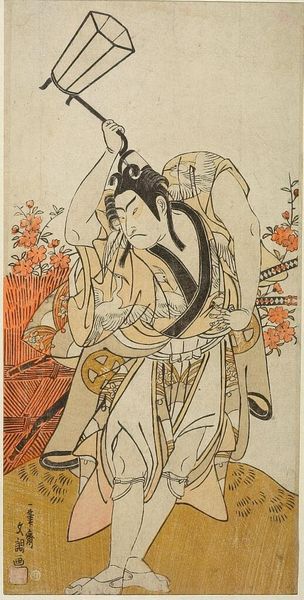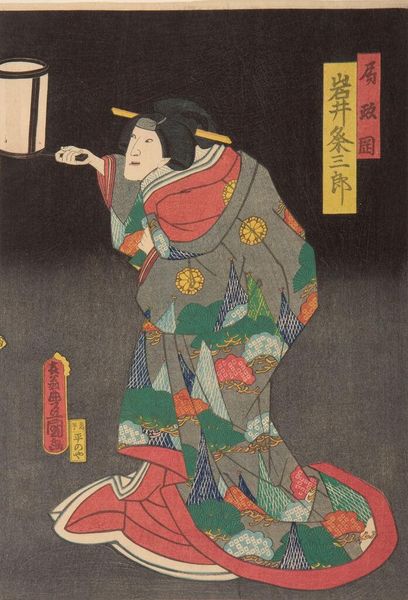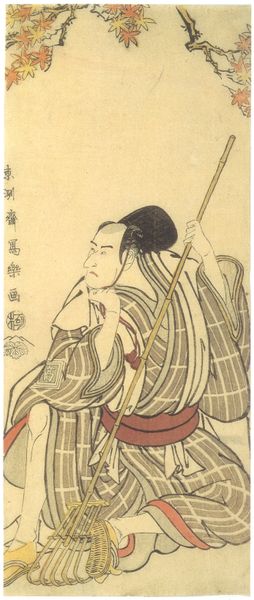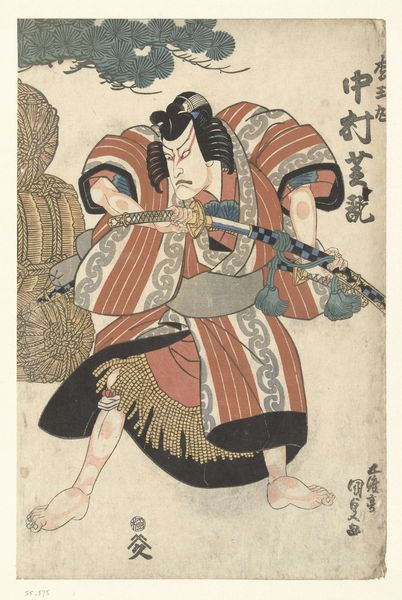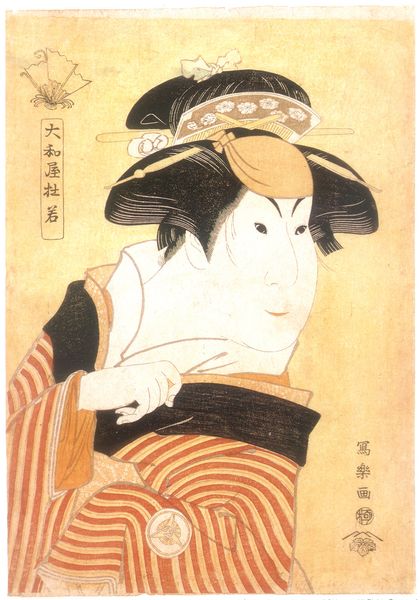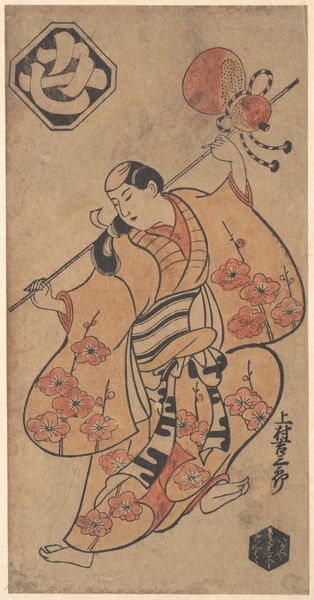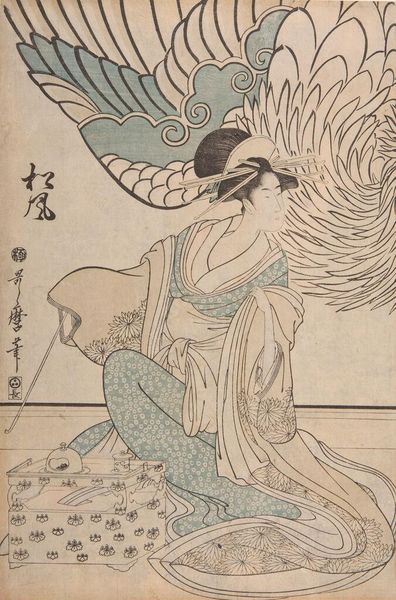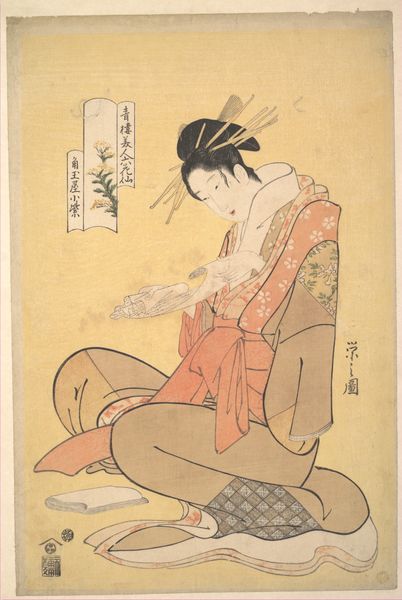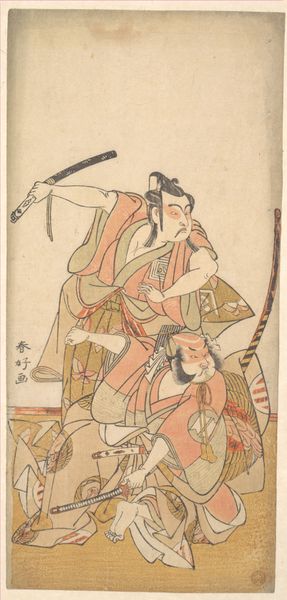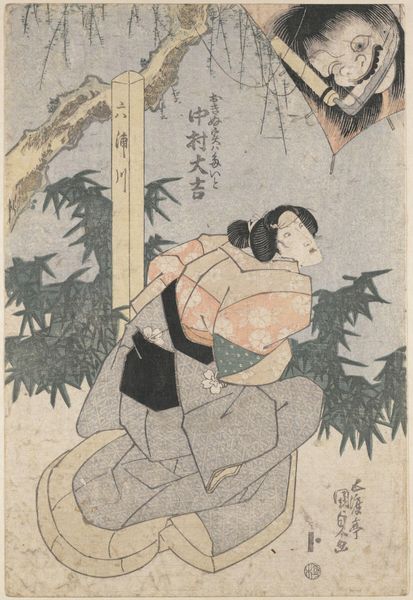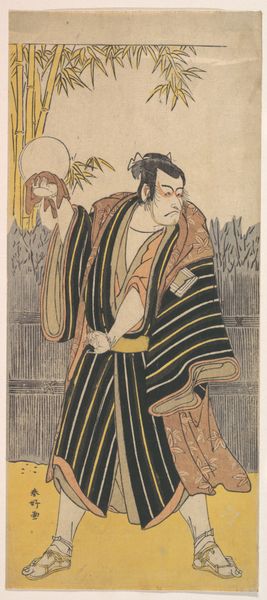
print, woodblock-print
#
portrait
# print
#
asian-art
#
ukiyo-e
#
figuration
#
woodblock-print
Copyright: Public domain
Curator: Let's explore "Nakamura Nozio II as Ono no Komachi," a woodblock print by Tōshūsai Sharaku, created in 1794. My immediate reaction is to its striking composition and subdued coloration. It feels… intimate, despite the figure's somewhat theatrical posture. Editor: Indeed. Sharaku, active for only a short period, radically altered the established ukiyo-e tradition, particularly regarding representations of gender and performance. Here, Nakamura Nozio II, an onnagata actor, portrays the poet Ono no Komachi, blurring lines between identity and artistic expression. Curator: The depiction of the actor performing the female role allows us to question and engage with accepted ideas on the construction of identity. The artist presents the character, Ono no Komachi, an accomplished and respected poet from the Heian period. It’s remarkable that we see Nozio's portrayal, but we should also reflect on the life of the historical poet as well as Nozio. Editor: Absolutely. Context is key to the piece’s subversiveness. Sharaku produced these actor portraits during a time of great political change, marked by rising social tensions in Japan’s late Edo period. Examining Sharaku’s social context really exposes the social tensions bubbling under the surface during his lifetime. The very public performance of gender and identity on the kabuki stage challenged these notions. Sharaku, working during the Edo period, was known for pushing against boundaries in public forums by representing the performances that challenged societal norms on-stage. Curator: Considering it's a woodblock print, there’s such detailed rendering, even in the fabric patterns. It reminds us of art’s vital role as an expression and historical record of shifting cultural values. Editor: For me, reflecting on Nozio as Ono forces me to see performativity in gender that can give license to think differently about people. Sharaku's works remind us that art exists in dialogue with society. It can also serve as a catalyst for re-examining the power dynamics at play in the production, presentation, and interpretation of art. Curator: Precisely. It is really eye-opening to look at gender in history like this.
Comments
No comments
Be the first to comment and join the conversation on the ultimate creative platform.

